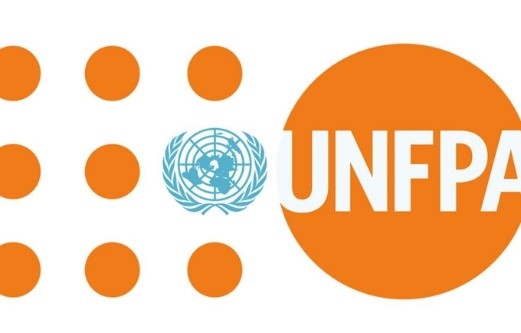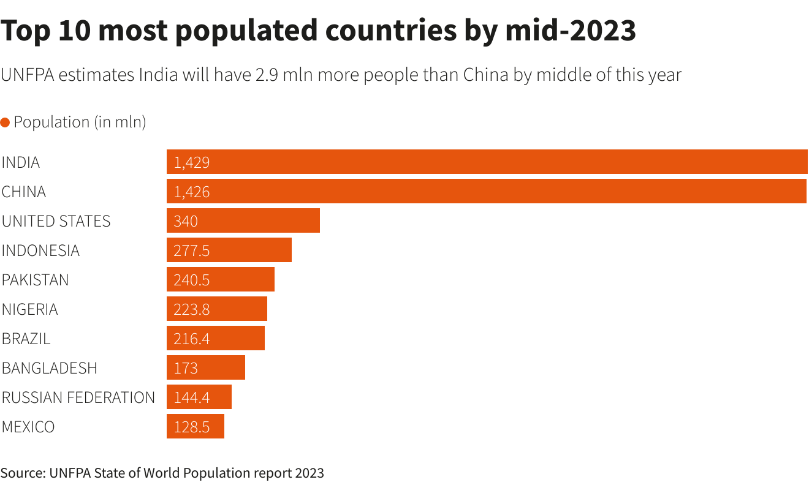Description

Disclaimer: Copyright infringement not intended.
Context
- The United Nations Population Fund's (UNFPA) "State of World Population Report" was recently released
Findings of the Report
India to overtake China
- India is set to overtake China to become the world’s most populous country by the middle of 2023.
India’s estimated population
- India's population by mid-year is estimated at 1.4286 billion, against 1.4257 billion for China - 2.9 million fewer.
US and the world
- The United States is a distant third, with an estimated population of 340 million as of the end of June.
- The world’s population hit the 800-crore mark in November 2022.

China and India- Trend
- Although both India and China will account for more than a third of the estimated global population of 8.045 billion, population growth in both has been slowing, albeit much faster in China than India.
- Population trends everywhere point to slower growth and ageing societies.
Cross country scenario
- Just eight countries will account for half the projected growth in global population by 2050 — the Democratic Republic of Congo, Egypt, Ethiopia, India, Nigeria, Pakistan, the Philippines and the United Republic of Tanzania — while two-thirds of people now live in a country where lifetime fertility corresponds with zero growth.
UN’s observation of India
- The UN agency said its findings for India too had suggested that “population anxieties have seeped into large portions of the general public”.
Recommendations made by the UN
- It called for a radical rethink on how countries address changing demographies and cautioned against use of family planning as a tool for achieving fertility targets.
- It warned that global experience showed that family planning targets can lead to gender-based discrimination and harmful practices such as prenatal sex determination leading to sex-selective abortion.
- Imposition of such targets can lead to imbalanced sex ratios, preferential health and nutrition for male children, denial of the paternity of female children, violence against women for giving birth to girl children, and coercion of women to have fewer or greater numbers of children.
- With close to 50% of its population below the age of 25, India has a time-bound opportunity to benefit from the demographic dividend,” and that it must convert this into “economic benefits through additional investments in health, education, and quality jobs for young people — including targeted investments in women and girls.”
- The report strongly recommended that governments introduce policies with gender equality and rights at their heart, such as parental leave programmes, child tax credits, policies that promote gender equality in the workplace, and universal access to sexual and reproductive health and rights.
-min.jpg)
UNFPA
About
- The United Nations Population Fund(UNFPA), formerly the United Nations Fund for Population Activities, is a UN agency.
Aim
Genesis
Mandate
Areas of work
Goals
- UNFPA uses a human rights-based approach in programming to address three "transformative goals":
- Zero preventable maternal death.
- Zero gender-based violence.
- Zero unmet need for family planning.
|
PRACTICE QUESTION
Q. India has a time-bound opportunity to benefit from the demographic dividend and that it must convert this into “economic benefits through additional investments in health, education, and quality jobs for young people — including targeted investments in women and girls. Elucidate.
|

https://www.thehindu.com/news/national/india-population-to-surpass-china-mid-year-un-estimates/article66754584.ece
















